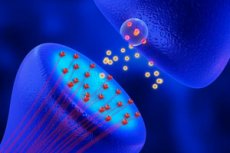New publications
Study shows Alzheimer's-in-a-cup model could speed up drug development
Last reviewed: 03.07.2025

All iLive content is medically reviewed or fact checked to ensure as much factual accuracy as possible.
We have strict sourcing guidelines and only link to reputable media sites, academic research institutions and, whenever possible, medically peer reviewed studies. Note that the numbers in parentheses ([1], [2], etc.) are clickable links to these studies.
If you feel that any of our content is inaccurate, out-of-date, or otherwise questionable, please select it and press Ctrl + Enter.

Ten years ago, researchers introduced a new model for studying Alzheimer’s disease called Alzheimer’s in a dish. The model uses cultures of mature brain cells suspended in gel to recreate the changes that occur in the human brain over 10 to 13 years in just six weeks. But does this model truly replicate the changes that occur in patients? In a new study, scientists at Mass General Brigham and Beth Israel Deaconess Medical Center (BIDMC) developed an algorithm to objectively assess how accurately Alzheimer’s models accurately reflect the functional and genetic changes in patients’ brains. The results, published in the journal Neuron, confirmed key similarities, proving that the Alzheimer’s in a dish model could be used to speed up the evaluation and development of new drugs.
Confirmation of the effectiveness of the model
“Our goal is to find the best model that most accurately reflects what’s happening in the brains of Alzheimer’s patients. We developed this 3D model 10 years ago, and now we have data that suggests it could accelerate drug discovery,” said study co-author Dr. Do Young Kim, of the Massachusetts General Hospital Department of Neurology.
Joining forces to fight Alzheimer's disease
The study was made possible by a collaboration between neuroscience and systems science researchers aimed at improving treatments for Alzheimer's disease (AD). For decades, a major problem with AD research has been the limitations of mouse models, which do not reproduce the amyloid plaques and other hallmarks of the disease found in humans.
“We are faced with a fundamental challenge: understanding which patterns truly capture the complexity of Alzheimer’s disease in the human brain,” said study co-author Dr. Winston Hyde of BIDMC. “By shifting the focus from individual genes to biological pathways, we have created a system that changes the way we approach drug discovery and testing.”
New algorithmic platform
The researchers developed an innovative pathway activity analysis (IPAA) platform to determine which models best reflect functional changes in AD and identify key pathways for drug development. In the study, they identified 83 dysregulated biological pathways common to brain samples from deceased AD patients and 3D cellular models.
One of the pathways studied as a proof of concept was p38 MAPK (mitogen-activated protein kinase). Using a p38 MAPK inhibitor that had not previously been tested in AD patients, the researchers were able to significantly reduce AD pathological changes in a laboratory model, highlighting its potential for clinical trials.
Scaling and accelerating drug development
The Alzheimer's in a Dish model, together with the IPAA algorithm, has allowed researchers to test multiple drugs simultaneously. Hundreds of approved drugs and natural compounds have already been tested, opening the door to clinical trials.
"We now have a system that not only allows us to quickly test new drugs, but also predict which ones will be most effective," said Dr. Rudolph Tanzi, director of the McCance Center for Brain Health.
The Future of Research
These advances bring medicine closer to developing effective drugs for Alzheimer's disease and speeding up their introduction to patients. New approaches that combine advanced modeling technologies and algorithmic analytics promise to significantly advance the fight against this complex disease.
The study was published in the journal Neuron.
